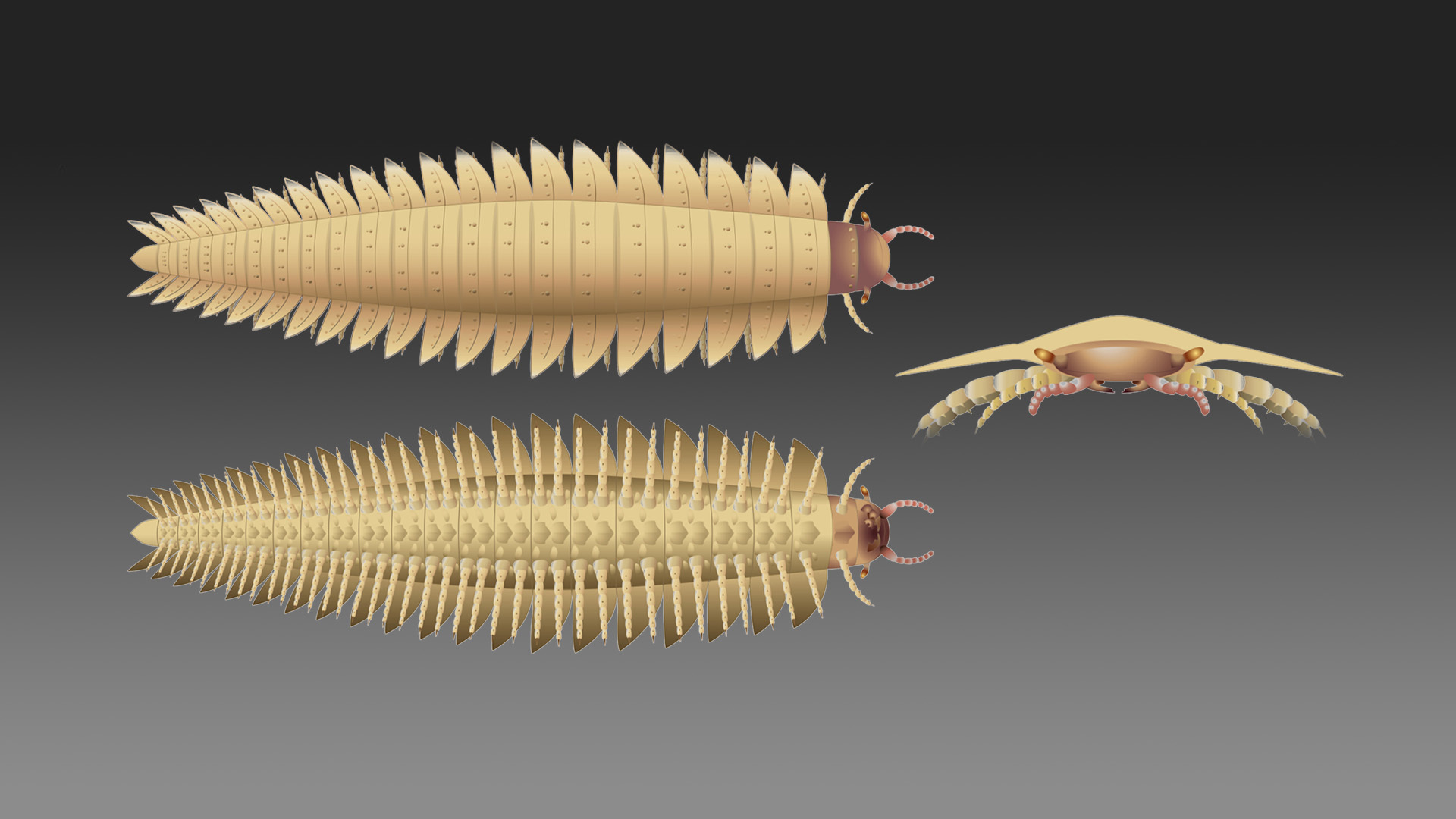
Jack Aylmer
WE’VE GOT NEW DETAILS TO SHARE ABOUT ONE OF THE LARGEST BUGS TO EVER LIVE.
WHY ARE WE TALKING ABOUT A NINE-FOOT-LONG INSECT WITH DOZENS OF LEGS FROM 300 MILLION YEARS AGO?
WELL – BECAUSE UNTIL NOW, SCIENTISTS DIDN’T KNOW WHAT ITS HEAD LOOKED LIKE. AND THAT’S HELPING CLEAR UP ITS IMPACT ON ITS DESCENDANTS.
WE LEARNED THIS WEEK THEY’RE FINALLY PIECING THIS MYSTERY TOGETHER.
MOST OF THE FOSSILS FOUND WERE HEADLESS SHELLS–LEFT BEHIND AFTER THE CREATURES MOLTED, SHEDDING THEIR EXOSKELETONS THROUGH THE HEAD OPENING AS THEY GREW LARGER.
DISCOVERIES OF THESE FOSSILS GO BACK TO THE 1800S – BUT IT TOOK MODERN TECHNOLOGY TO FIGURE OUT THE SHAPE OF THE CREATURE’S HEAD.
ROUND, WITH TWO SHORT ANTENNAE AND TWO EYES THAT STUCK OUT LIKE A CRAB, THIS 100-POUND INSECT HAD A SMALL MOUTH SUITED FOR GRINDING LEAVES AND BARK.
THESE TRAITS BUNDLED TOGETHER MADE UP A CONFUSING MIXTURE OF CENTIPEDE- AND MILLIPEDE-LIKE CHARACTERISTICS.
BY USING C-T SCANS RESEARCHERS WERE ABLE TO CLEAR UP THIS LONG-STAND FAMILY-TREE CONTROVERSY.
THERE’S A LOT LEFT TO LEARN ABOUT THIS MIGHTY MILLIPEDE, INCLUDING WHAT IT MIGHT HAVE EATEN AND WHETHER IT WALKED ON LAND, UNDERWATER OR WAS CAPABLE OF BOTH.
I’M JACK ALYMER.
FOR MORE INSECT NEWS YOU CAN USE – DOWNLOAD THE STRAIGHT ARROW NEWS APP.











